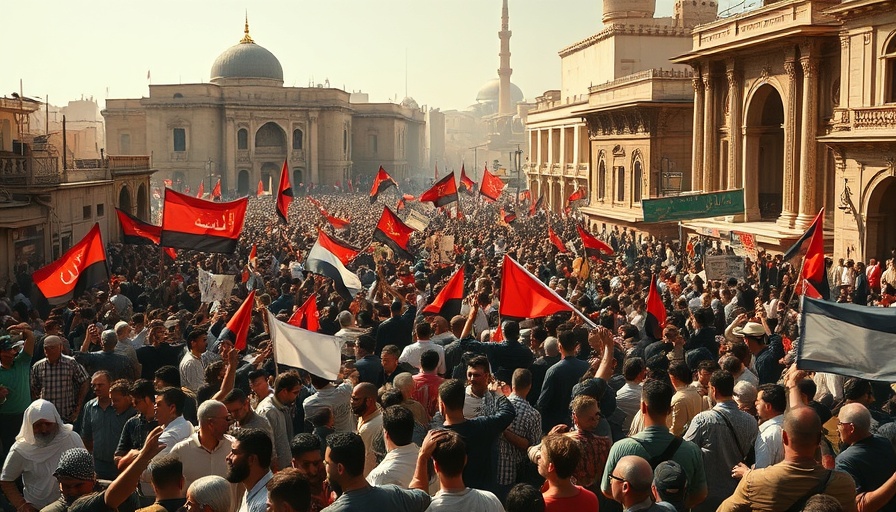
The Islamic Republic: At a Historical Crossroads
The Iranian regime finds itself at a precarious moment, 46 years after the revolution that set it into power. The present events signal deep unrest as the regime grapples with not just external aggression, particularly from Israel, but with widespread internal dissatisfaction among its citizens. The striking contrast between the leadership's autocratic grip and the youthful aspirations of the Iranian populace paints a stark picture that resembles past political upheavals in history.
Economic Turmoil and Public Dissatisfaction
As reported, public dissent has reached new highs amid economic strife that has plagued Iran for years. The regime’s heavy investment into nuclear ambitions and foreign military engagements has not curbed the rampant inflation and unemployment felt by everyday Iranians. An example of this economic disaster is reflected in the soaring prices of basic goods, pushing many citizens to protest against a government that seems more invested in military pursuits than the welfare of its people.
The Role of Leadership: Khamenei's Long Reign
Ayatollah Ali Khamenei, now 86, has been a key figure in asserting control over Iran for more than three decades. His leadership style has always revolved around conservatism and maintaining the revolution's principles. However, some analysts point out that he now resembles an outdated vehicle in a rapidly changing world. His unwillingness to adapt to public sentiment might cause the roof to cave in on his authority, with voices of dissent growing louder and more organized.
Challenges to Power: The Propelling Forces Behind the Protests
There are undeniable parallels between Iran's current state and other historical regimes that faced similar fates, such as the late Soviet Union. Experts have drawn attention to the growing dissatisfaction among the youth demographics who now make up a significant segment of the Iranian population. Their calls for reform echo through the streets as protests intensify, seeking liberty and modernization. They are aptly named the "Aspirational Generation,” yearning for progressive change instead of a static autocracy.
The Impact of International Relations
The ongoing conflict with Israel complicates an already dire situation. Bombings of critical facilities like the Natanz enrichment site have severely affected Iran's nuclear capabilities and further intensified its isolation. Such military confrontations amplify national insecurity, which in turn can lead to increased domestic repression in a desperate bid to maintain order. As more civilians fall victim to collateral damage during these disputes, anger simmers into further unrest against the regime's failures in handling both foreign and domestic affairs.
Iran's Future: A Regime on the Precipice?
Looking ahead, the stability of the Iranian regime could be contingent on Khamenei's ability to either adapt or retain control amidst a changing populace. Some analysts suggest that the current military posture may aim to instill a sense of unity against external threats, yet history illustrates that one can only push the populace so far before explosive discontent takes hold. As Karim Sadjadpour aptly states, “The Islamic Republic is a rotten tooth waiting to be plucked.” This sentiment resonates deeply as critics argue that real motion towards democratic reform is the only path forward.
Conclusion: Understanding the Weight of Decisions
For those following geopolitical developments, the intricate dynamics of the Iranian regime's challenges serve as a crucial case study. As tensions rise, it becomes increasingly important for global observers to understand how these pressures could foster both conflict and potential pathways toward reform. The situation in Iran should serve as a reminder of the profound impact of governance on social stability and the collective will of the populace. In times of uncertainty, one thing remains clear: genuine democratization is an urgent need for the Iranian people.
 Add Row
Add Row  Add
Add 




 Add Row
Add Row  Add
Add 

Write A Comment